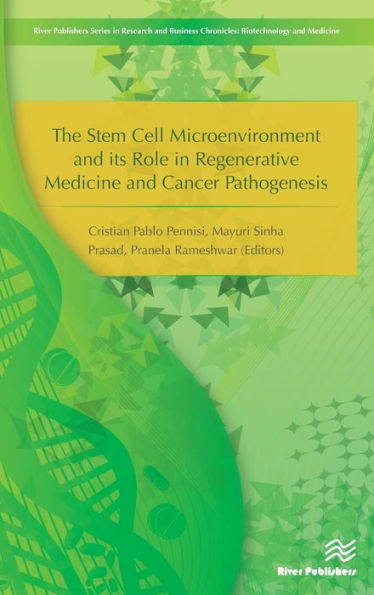The Stem Cell Microenvironment and Its Role in Regenerative Medicine and Cancer Pathogenesis
How stem cells behave is very much a factor of their local microenvironment, also known as the stem cell niche. Physical, chemical, or electrical signals from the neighboring cells or biochemical signals from distant cells are crucial in the cell fate decision process. A major challenge of tissue engineering is to mimic the natural cell environment by designing very sophisticated scaffolds able not only to mechanically support cells, but also to release signals biologically relevant for governing stem cell fate. In addition, increasing evidence suggests that abnormal interaction of stem cells with their niche is responsible for altered cell function leading to malignant transformation. This book discusses some of the recent advances in stem cell research that may help understanding the properties of the niche that govern stem cell fate. Technical topics discussed include:Stem cell biologyCancer stem cellsStem cell interactions with biomaterialsEngineering the stem cell microenvironmentStem cells in tissue regeneration and repairThe Disputationes Workshop series is an international initiative aimed at disseminating stem cell related cutting edge knowledge among scientists, healthcare workers, students and policy makers. This book emerges as a result of the scientific contributions presented and discussed during the fifth Disputationes Workshop held in Aalborg (Denmark) in April 2014. The stem cell microenvironment and its role in regenerative medicine and cancer pathogenesis is ideal for academic staff and master/research students in biomedical and health sciences
1145850659
The Stem Cell Microenvironment and Its Role in Regenerative Medicine and Cancer Pathogenesis
How stem cells behave is very much a factor of their local microenvironment, also known as the stem cell niche. Physical, chemical, or electrical signals from the neighboring cells or biochemical signals from distant cells are crucial in the cell fate decision process. A major challenge of tissue engineering is to mimic the natural cell environment by designing very sophisticated scaffolds able not only to mechanically support cells, but also to release signals biologically relevant for governing stem cell fate. In addition, increasing evidence suggests that abnormal interaction of stem cells with their niche is responsible for altered cell function leading to malignant transformation. This book discusses some of the recent advances in stem cell research that may help understanding the properties of the niche that govern stem cell fate. Technical topics discussed include:Stem cell biologyCancer stem cellsStem cell interactions with biomaterialsEngineering the stem cell microenvironmentStem cells in tissue regeneration and repairThe Disputationes Workshop series is an international initiative aimed at disseminating stem cell related cutting edge knowledge among scientists, healthcare workers, students and policy makers. This book emerges as a result of the scientific contributions presented and discussed during the fifth Disputationes Workshop held in Aalborg (Denmark) in April 2014. The stem cell microenvironment and its role in regenerative medicine and cancer pathogenesis is ideal for academic staff and master/research students in biomedical and health sciences
115.0
In Stock
5
1

The Stem Cell Microenvironment and Its Role in Regenerative Medicine and Cancer Pathogenesis
142
The Stem Cell Microenvironment and Its Role in Regenerative Medicine and Cancer Pathogenesis
142Hardcover
$115.00
115.0
In Stock

Product Details
| ISBN-13: | 9788793379930 |
|---|---|
| Publisher: | River Publishers |
| Publication date: | 02/01/2017 |
| Series: | River Publishers Series in Research and Business Chronicles: Biotechnology and Medicine |
| Pages: | 142 |
| Product dimensions: | 6.12(w) x 9.19(h) x (d) |
About the Author
From the B&N Reads Blog
